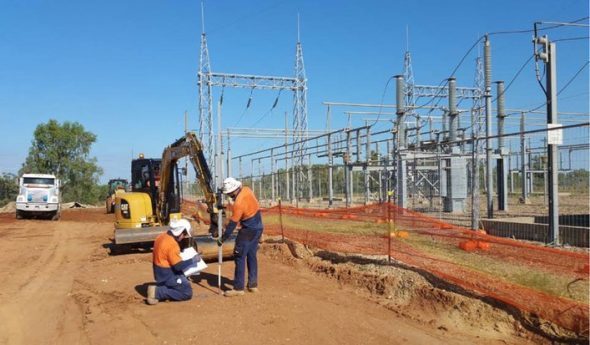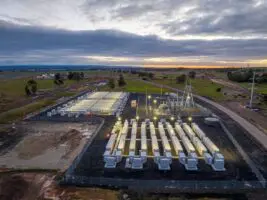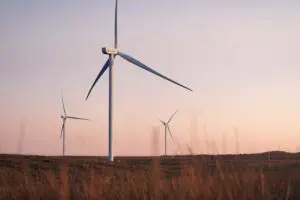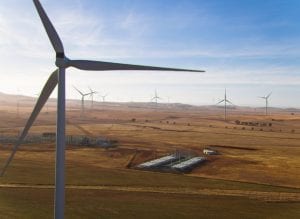Industry insiders are warning that Australia will struggle to meet the demand for both specialised and generalised skills to drive the post-Covid renewable energy transformation, especially those skills needed to develop the states’ regional Renewable Energy Zones.
With an estimated $66 billion to be invested in renewable energy over the next 10 to 15 years, and a further $27 billion in rooftop solar and battery storage, the money and the ambition for a revolution are there, yet the risk of being unable to find workers may threaten the entire venture’s viability.
“The wider context is that it really rings alarm bells for renewables projects,” said Dr Chris Briggs, a research director at the UTS Institute for Sustainable Futures and author of Market Capacity for electricity generation and transmission projects.
Even now, he adds, “there is a significant potential for shortages [of] engineers, electricians, then there are some specialised occupations like line workers which could impact more critical [projects].”
Labor shortages can have severe consequences for projects, and particularly shortages in specialised skill-sets. Being unable to source a crane operator to lift a wind turbine could not only delay the progress of a wind farm but could lead to missed delivery dates, which could in turn incur contractual penalties.
Even before the first sod is turned at large-scale solar and wind projects, financiers will evaluate the project’s risks, including the availability of skilled workers. Projects considered too risky may never get off the ground.
Renewable energy development draws from the same labour pool as big infrastructure projects, which are set to surge in the post-Covid boom. In this broader context, demand for labour is expected to increase by 75% over the next three years, with one in three roles unfilled.
Such a spike could squeeze out renewables, warns Briggs, as “energy is quite a small player and… doesn’t pay as well as resources.”
There is also the city/regional divide, with big infrastructure concentrated in the major cities together with the bulk of the workforce. Renewable Energy Zones, on the other hand, have always been sold as regional renewal, as much as green projects.
“Developing a local workforce will be a challenge for anything beyond a [fly in fly out] approach – then you need longer term jobs, career paths and supporting infrastructure,” said Briggs, citing a source whose experience working in a REZ has revealed not just a skills shortage, but a more generalised labour shortage.
“It really is tough and we’re competing in a very limited labour market for people who will have a good chance of getting a job in mining or other industries – and we need specific skills,” says Peter Cowling, the head of the Australian arm of Danish wind giant, Vestas, which has landed some of the biggest wind farm construction projects in Australia.
Of all the skills on Cowling’s list, power systems engineers rank as the most in-demand.
“Given any chance to talk to an electrical engineering students, I will say first, ‘please do your power systems elective and if you like it you will be piled into a limousine and taken somewhere to be signed up’,” he said.
According to Cowling, the renewable labour market is still living with the legacy of historic uncertainty.
“The current government wanted to shut us down eight years ago – that’s a lived memory.” This has led to companies lacking the confidence to make long-term investments in staffing, Cowling added – “but that’s all past us.”
Even now in the late-Covid lull, in an industry as established and metro-concentrated as rooftop solar, the bite the the labour force is already being felt.
Solar Run’s CEO Anthony Kurta has been in the sector for 15 years and has tried recruiters but they returned with the same candidates he had found himself.
“The industry is growing at such a rapid rate – where are these people going to come from?” Kurta said.
“There’s a real shortage of talent out there,” said Richard Evans, managing director of Talent Nation, a recruitment agency that specialises in the sustainability space.
“[Shortages are being experienced across] the full life cycle,” he added, “from project development through to design construction and operations as well.”
Skills shortages are a cost absorbed throughout the entire industry. A bidding war over candidates can inflate salaries. The entire value proposition needs to be considered, Evans says: “It can’t be just the dollars, because someone will always offer more money.”
Cowling says: “We talk to recruiters, we directly advertise ourselves, we use social media and we work with a number of institutions.”
He says universities and schools and TAFEs need to start training people quickly and Cowling has even visited schools adjacent to wind farms to try to correct this very problem.
“I’ve spent some time in Mount Gambier in the school we’re working with – there are kids you can talk to about a blue collar career, kids you can talk to about a white collar career.”
Before Covid, one solution could be to source talent from overseas, but for the time being borders are closed. Covid has also forced a rethink on an economy reliant on overseas labour and, politically, there is a huge payoff for local jobs and “getting Australians back to work.”
What’s more, green energy is a global boom, so the whole world is searching for the same skills as Australia.
Closed borders have also devastated universities and exposed a key vulnerability of a business model that relies on overseas students as a vital source of income.
A report co-authored by Victoria University’s Dr Melinda Hildebrandt, “Australian Investment in Higher Education,” found that total revenue for universities had fallen by $2.4 billion, or 6%, in 2020 compared with 2019.
What’s more, the heaviest losses have been felt in technical universities like University of NSW and RMIT. The dust is still clearing, but the situation for universities will likely get worse before it gets better, with every missed six-monthly intake of international students costing around $1-$1.2 billion.
On the VET side, electricians are the most in-demand occupation during an energy transformation. Australian Industry Group’s head of education and training, Megan Lilly, says shortages in that field reach back all the way to schools.
“You could put more funding into the vocational system and create more places but you wouldn’t necessarily create more electricians,” Lilly said.
“There’s a shortage of people wanting to become electrical apprentices and there’s a shortage of positions available.”
To Lilly, the drivers here are entrenched, with universities the preferred option of parents and schools who believe professions rather than trades guarantee a better future for kids.
“Some people have gone to universities who would absolutely have been better off pursuing a vocational pathway,” she said. “[Schools] should create parity of esteem across both these types of learning to ensure we open broader pathways for everyone that goes through schooling.”
Apprenticeships have become a contentious political issue heading into the next election. Federal shadow minister for skills, Richard Marles, is critical of the Morrison government’s performance in the space.
“We have 115,000 fewer trainees and apprentices than we did when this government came to power, and that means we don’t have people skilled up to take advantage of opportunities in booming industries,” he said. Labor has pledged to create 10,000 New Energy Apprenticeships if it wins the upcoming federal election.
The federal minister for employment, skills and small business, Stuart Robert, claims this is little more than “arithmetic gymnastics” and points to the government’s own “$2 billion JobTrainer initiative” and the $3.9 billion Boosting Apprenticeship Commencements, which he says increased new apprenticeships by 141.5 per cent.
Yet according to the government’s own data apprenticeship commencements have been falling steadily over the past decade and are now at their lowest since 1996-97.
Even with government support, apprenticeships are a weak segment in the training pipeline, with poor pay and – for employers – the ever present threat they will be poached late, giving another company the benefit of a significant staffing investment.
Ultimately, any shortage of skilled labour comes back down to responsibility – as in, whose responsibility is it to train a workforce required to power a nation-wide energy transformation?
Before the 90s privatisation binge, huge public enterprises such as the railways and state energy commissions were seen as apprentice factories to churn out the skills for the whole country.
With the decline of our manufacturing base and the resource sector’s Dutch Disease, Australia must reverse a downward trend.
The Australia Institute’s chief economist Richard Denniss says there is a fundamental flaw in how infrastructure projects are conceived.
“We’re pretending the real skill of infrastructure is cooking up the contracts and financing,” Denniss said.
“We’ve got every merchant bank in the country saying ‘oh yes, we specialise in getting new infrastructure projects by successfully bidding to do something… Oh we’ve won the bid! Does anyone have ten thousand skills staff willing to start? Oh I thought you did!’”
Cowling agrees on this point. “Our industry is really going to be running the grid. There’s no point in renewables saying to the rest of industry, ‘well, you need to train more people.’ That’s us now. We are the SEC [State electricity commission].”
The problem of supply, seen from another angle, could become an opportunity beyond simply providing grist to the renewable mill. Chris Briggs argues that Renewable Energy Zones could provide good entry level jobs in solar and transmission, including pathways for indigenous and regionally unemployed workers.
Federation TAFE is working with wind industry heavies like Vestas to build an Asia Pacific Renewable Energy Training Centre (APRETC) in Ballarat.
To Cowling, the incentive for investing in APRETC is very clear: “We can get someone qualified there who we could use elsewhere in the world – that’s really valuable.”
Like APRETC, Queensland has announced a Pinkenba Renewable Energy Training Facility. The ambition is not new. Investment and innovation in higher education could establish Australia as not just a renewable energy superpower, but as a global centre for skills. Yet given the current deficit in supply, this seems a long way off.












